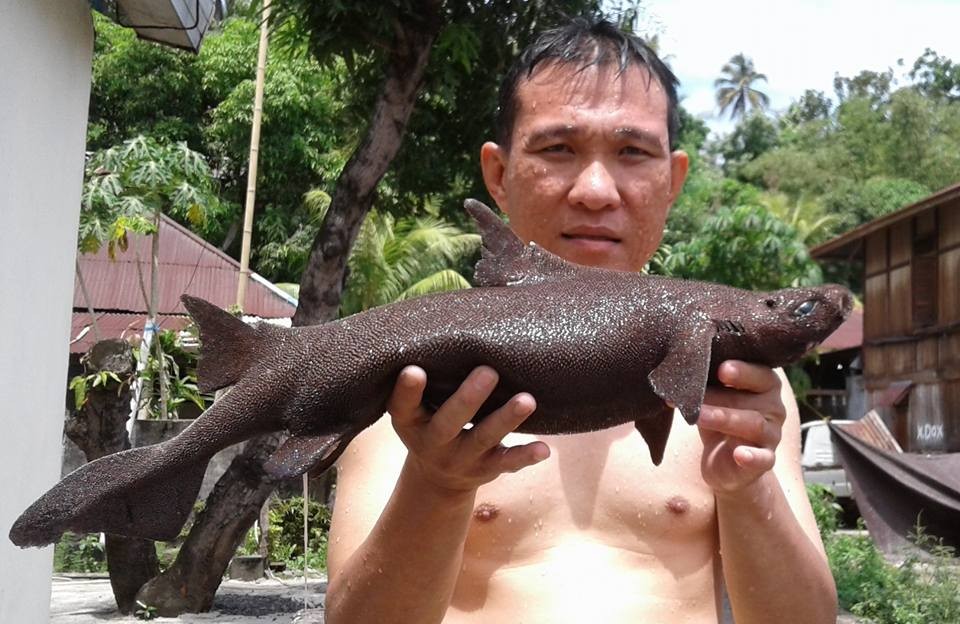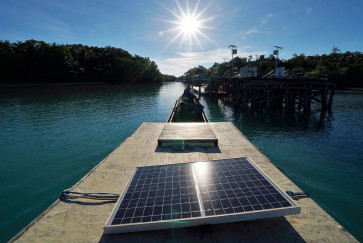Popular Reads
Top Results
Can't find what you're looking for?
View all search resultsPopular Reads
Top Results
Can't find what you're looking for?
View all search resultsFish of unconfirmed species found in Minahasa
Change text size
Gift Premium Articles
to Anyone
A
fish that looks like a shark measuring 60-centimeters-long was found on Kalasey Beach in Minahasa regency, North Sulawesi by a police officer.
Adj. First. Insp. Jeffry Nggala, an officer with the Wanea Police in Manado, North Sulawesi, said Tuesday that he found the fish on Sunday when he was on the beach with his children. “At first I thought it was a dugong. When we found it, it was very weak. I tried to save the fish,” Jefrry said.
He placed the fish in a cooler and put some ice in it. He said fishermen on Kalasey Beach he met said they had never seen such fish before. “I posted the picture on Facebook. Many people commented and wanted to buy the fish, but I don’t want to sell it. I want it to be researched by a scientist,” Jeffry said.
Jeffry posted a video of the fish on Facebook and added a comment that it was "Oxynotus bruniensis" or a prickly dogfish. A Wikipedia entry for the species says the fish inhabits temperate Australian and New Zealand waters. It is a poorly known species.
Edwin Donny Ngangi, a lecturer at the School of Fisheries and Oceanography at Sam Ratulangi University in Manado said the fish likely lived in the deep sea. “We need to carry out research to identify its species,” he said.
He said his team would gather Tuesday to start a simulation to research the fish at a biotechnology lab at the biology department in the university’s School of Natural Sciences. “If the simulation runs well, we will start researching on Wednesday. To determine the species we need more time. DNA results will perhaps be available in two weeks,” he said. (evi)










